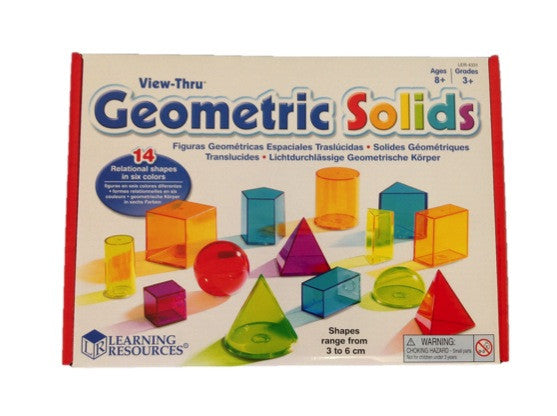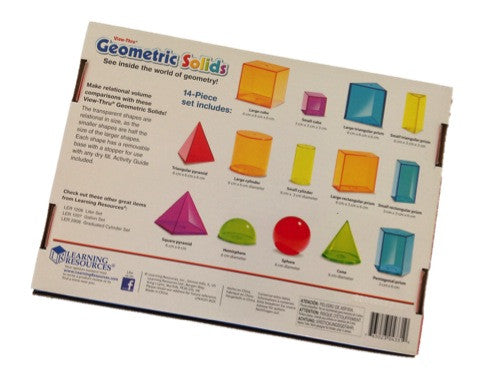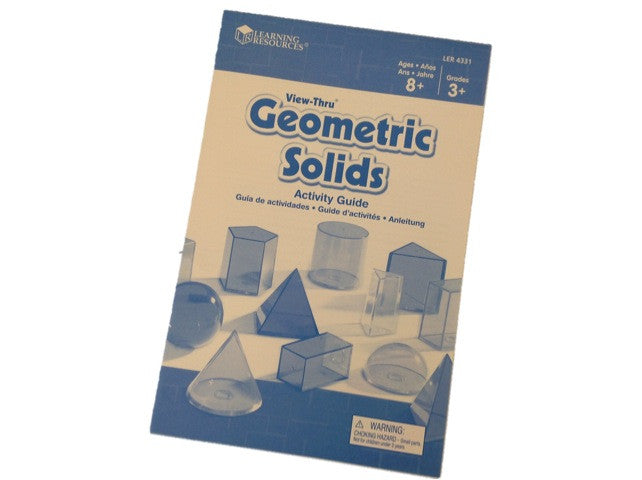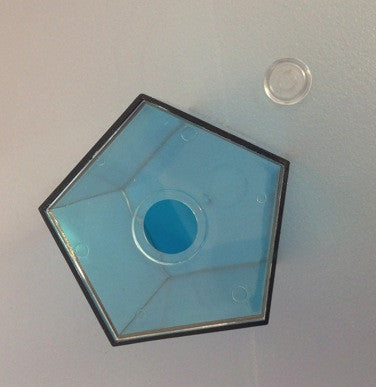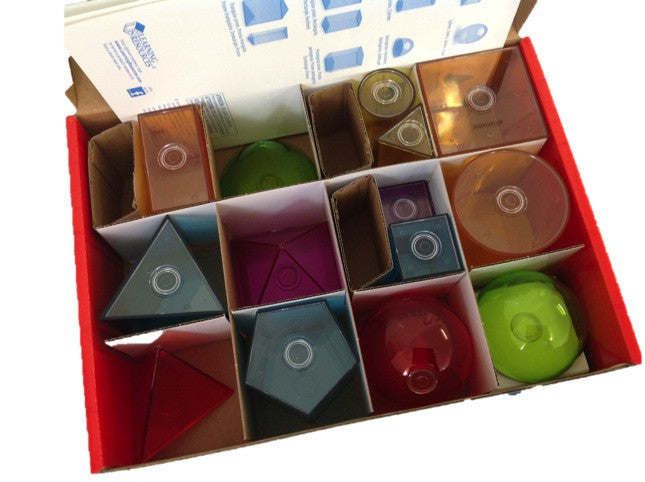View-Thru Geometric Solids
A great way to introduce and reinforce the dimensions and vocabulary associated with Geometric Solids (and the perfect accompaniment to the formal Montessori Geometric Solids.)
The set includes 14 shapes - a large cube, small cube, large triangular prism, small triangular prism, triangular pyramid, large cylinder, small cylinder, large rectangular prism, small rectangular prism, square-based pyramid, hemisphere, sphere, cone and pentagonal prism.
(Yes there is a 'cheat sheet' on the back of the box for grown ups who need a reminder!)
The View-Thru Geometric Solids are sturdy plastic shapes. The translucency allows the child to observe the angles created by the solid shapes (which is great for inspiring artistic attempts at drawing the shapes themselves!) The shapes are completely 'solid' to begin with but the base allows for two variations - either removing a small plastic disc to create a hole for filling the shape (such as with water, as shown in our 'volume' activity outlined below) or by then placing your finger in this hole to pop out the entire base in order to use the shapes for moulding (such as with Kinetic Sand).

The removable 'disc' is quite small and transparent so we recommend either providing the child with a vessel for storing it, or excluding it from the activity completely, in order to avoid loss.
The View-Thru Geometric Solids provide an opportunity for a broad range of sensory, scientific and numeracy explorations. The included activity guide provides a starting point for some of these experiences but there are many other potential activities that inspired adults, or creative children, can develop.
In my own classroom we use them with our Kinetic Sand as an extremely engaging and fun way of reinforcing the properties and dimensions of these shapes in a very 'hands on' way!

Another great experience involves using the View-Thru Geometric Solids to measure volume. This can be done in a variety of ways depending on the level of challenge appropriate to the child. One method is providing just a couple of the smaller solids along with a 1 millilitre pipette so that the child simply counts the number of transfers required to fill the shape. This can then be recorded in a graph to incorporate a scientific skill while promoting an integration of maths and literacy.
A more challenging way of measuring volume can involve the use of a syringe that holds a greater volume itself (such as 5, 10 or 20 mls) so that the child engages either in addition or multiplication to find a total volume based on the number of transfers required to fill the solid.

